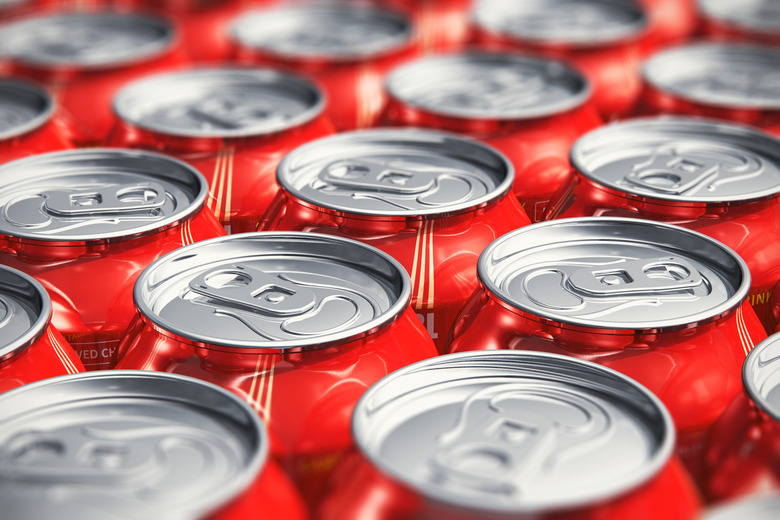Why Does Soda Explode In Freezers?
When the water inside a soda turn to ice inside the freezer, it expands and pushes the carbon dioxide out, causing an explosion. Everyone has a story about a frozen soda exploding. Whether they've made a mess in the freezer trying to cool down a six-pack of cans before a party or they left a two-liter bottle in the car overnight during a frosty winter and came back to a sticky disaster, the question always comes: how does this happen, and why does the soda container look so weird afterwards?
TL;DR (Too Long; Didn't Read)
Soda explodes when frozen due to the mixture of water molecules and carbonation. Soda is mostly water and is full of dissolved carbon dioxide gas that makes it fizzy. Water expands as it freezes, and the process pushes the CO2 in the soda outward. The combination of pressurized gas trying to escape and ice filling a space too small for it is too much for the container, and the strain makes the soda can or bottle explode.
Soda Contents
Soda Contents
Soda is almost entirely water, flavored with a sweet syrup and made fizzy by adding large amounts of CO2 gas in a process called carbonation. CO2 molecules naturally try to leave liquid by rising through the surface to escape as a gas: this is why soda bubbles up when you open it. If too much of the CO2 escapes the liquid, the drink goes flat, so extra CO2 is added to the air at the top of a can or bottle during manufacture to limit the amount of escaping gas. The behavior of water and carbon dioxide molecules in a sealed container is what causes soda to burst when frozen.
Molecules in the Cold
Molecules in the Cold
Because temperature affects the movement of molecules, and the movement of molecules affects the volume of a substance, most substances contract when they cool and freeze, and expand when they heat up and turn to liquid or gas. The CO2 molecules in the soda, for example, move less as they cool, taking up less space in the container. But water works differently.
Icy Exceptions
Icy Exceptions
Water's properties are unusual. Its molecules expand in freezing temperatures, rather than shrink: the hydrogen atoms in water molecules are attracted to oxygen atoms in nearby water molecules, forming a rigid structure as the water forms ice crystals. The rigid structure takes up more space than those same molecules did as a liquid, causing the ice in the soda container to expand and force out the CO2 inside it in the process.
Cite This Article
MLA
Flournoy, Blake. "Why Does Soda Explode In Freezers?" sciencing.com, https://www.sciencing.com/soda-explode-freezers-5145369/. 26 April 2018.
APA
Flournoy, Blake. (2018, April 26). Why Does Soda Explode In Freezers?. sciencing.com. Retrieved from https://www.sciencing.com/soda-explode-freezers-5145369/
Chicago
Flournoy, Blake. Why Does Soda Explode In Freezers? last modified August 30, 2022. https://www.sciencing.com/soda-explode-freezers-5145369/
